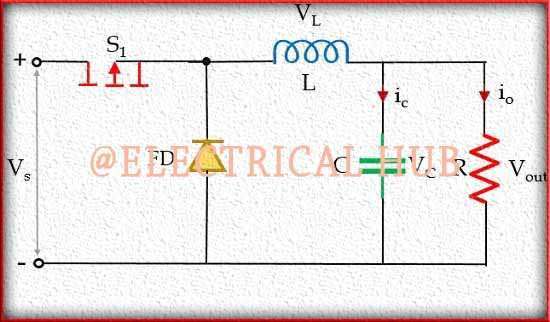Leakage Current Formula for Transistor
Leakage current is an important concept in transistor behavior. It affects the performance of both analog and digital circuits. The leakage current formula for transistor helps engineers understand power loss and reliability issues in semiconductor devices. In this article, we will explore the meaning, causes, and mathematical expressions of leakage current. We will also include insights into various types of transistors, including IGBT Transistor and Floating Gate Transistor.

What is Leakage Current in a Transistor
Leakage current is the unwanted flow of current through a transistor when it is supposed to be turned off. Ideally, in the OFF state, a transistor should block current flow completely. However, due to imperfections in the material and the structure, some current leaks through. This current is called leakage current.
The leakage current formula for transistor helps quantify this small yet significant current. This current is generally very small, often in the range of nanoamperes or microamperes. Yet, in low-power applications or high-density ICs, leakage can become a big problem.
Understanding Leakage Current in Different Transistors
Leakage current behavior changes with the types of transistor being used. For instance, in Bipolar Junction Transistors (BJTs), leakage mainly occurs from collector to base when the junction is reverse-biased. In Field Effect Transistors (FETs), the leakage current is mostly from drain to source due to sub-threshold conduction.
In Types of Field Effect Transistor, especially MOSFETs, leakage current is more prominent at smaller geometry sizes (below 90 nm). The current increases exponentially with temperature and supply voltage.
Basic Leakage Current Formula for Transistor
For MOSFETs, the most common leakage current is subthreshold leakage. The formula for subthreshold leakage current is:
I_leak = I₀ × e^[(Vgs - Vth)/(nVt)]
Where:
- I_leak = leakage current
- I₀ = zero-bias current
- Vgs = gate-to-source voltage
- Vth = threshold voltage
- n = subthreshold slope factor
- Vt = thermal voltage (kT/q)
This equation applies when Vgs < Vth and the transistor is in its OFF state. The leakage increases when the threshold voltage is low or when the temperature is high.
Know more about applications of schmitt trigger
BJT Leakage Current Formula for Transistor
In BJTs, leakage current occurs across the collector-base junction. The leakage current formula is:
I_CBO = I_s × (e^(V_CB / Vt) - 1)
Where:
- I_CBO = collector-base leakage current with emitter open
- I_s = reverse saturation current
- V_CB = collector-base voltage
- Vt = thermal voltage
As the collector-base voltage increases or temperature rises, leakage current increases. This leakage is critical in analog designs, where even small shifts can affect output accuracy.
Leakage Current in IGBT Transistor
An IGBT Transistor combines MOSFET input characteristics and BJT output properties. The leakage current in IGBTs is generally small but increases with temperature and voltage. The subthreshold leakage in the MOSFET gate and collector-emitter leakage in the bipolar portion both contribute.
Although there is no single formula, the leakage behavior in IGBT is similar to the combined leakage models of MOSFET and BJT. Engineers must consider both to get an accurate estimate.
Leakage in Floating Gate Transistor
A Floating Gate Transistor is used in flash memory. Leakage current here plays a different role. Over time, the floating gate may leak charge, leading to data retention problems.
The leakage current formula for a floating gate transistor is:
I_leak = C × (dV/dt)
Where:
- C = capacitance between floating gate and control gate
- dV/dt = rate of voltage change over time
This leakage is due to tunneling or defects in the oxide layer. It is one of the key limitations of flash memory technology.
Factors Affecting Leakage Current
Several parameters influence the leakage current in a transistor. These include:
- Threshold Voltage (Vth): Lower Vth increases leakage.
- Gate Length: Shorter channel lengths lead to higher subthreshold leakage.
- Temperature: Higher temperatures cause more leakage.
- Doping Concentration: Impacts junction leakage.
- Supply Voltage (Vdd): Higher Vdd can increase gate-induced drain leakage.
The transistor design must balance these to minimize leakage without compromising performance.
Temperature Dependence of Leakage Current
Leakage current increases exponentially with temperature. The relationship can be shown as:
I_leak ∝ e^(-Eg/(kT))
Where:
- Eg = bandgap energy
- k = Boltzmann constant
- T = temperature in Kelvin
This means that even a small increase in temperature can significantly raise leakage. This is why thermal design is critical in ICs.
Practical Values of Leakage Current
| Transistor Type | Leakage Current (Typical) |
|---|---|
| BJT (Collector-Base) | nA to µA |
| MOSFET (Subthreshold) | pA to nA |
| IGBT | nA to µA |
| Floating Gate | pA to nA (long-term loss) |
These values may vary based on the fabrication technology and environment.
Methods to Reduce Leakage Current
Designers use many techniques to reduce leakage:
- Use of high-K dielectrics
- Increasing threshold voltage (Vth)
- Power gating techniques
- Lowering supply voltage
- Multi-threshold CMOS technology
All these methods aim to maintain performance while keeping leakage manageable.
Real-World Example Using Leakage Current Formula for Transistor
Let’s take an example of a MOSFET with the following parameters:
- I₀ = 10⁻⁹ A
- Vgs = 0.1 V
- Vth = 0.3 V
- n = 1.5
- Vt = 0.026 V (at room temperature)
Using the formula:
I_leak = 10⁻⁹ × e^[(0.1 - 0.3)/(1.5 × 0.026)]
I_leak ≈ 10⁻⁹ × e^(-5.13)
I_leak ≈ 10⁻⁹ × 0.0059 = 5.9 × 10⁻¹² A
So, the leakage current is around 5.9 picoamperes. This value may seem small but becomes significant in high-density chips with millions of transistors.
Why the Leakage Current Formula for Transistor Matters
The leakage current formula is more than just a theoretical equation. It is a critical tool in VLSI design and low-power electronics. Knowing how to calculate leakage helps in:
- Estimating standby power
- Designing for reliability
- Managing thermal loads
- Optimizing battery-powered devices
As we move into smaller technology nodes, leakage control is a top priority. Transistor behavior becomes more unpredictable at the nanometer scale. This is why understanding the leakage current formula for transistor is essential for modern electronics.
Conclusion
Leakage current is a silent killer in transistor-based circuits. It affects everything from battery life to device performance. The leakage current formula for transistor provides a way to quantify and manage this issue. Whether you’re working with IGBT Transistor, Floating Gate Transistor, or exploring the Types of Field Effect Transistor, knowing how leakage behaves is key. This article covered the definitions, formulas, examples, and design considerations in a simple and human-readable manner. Mastering this concept helps in building efficient and reliable electronic systems.
Follow Us on Social:
Subscribe our Newsletter on Electrical Insights to get the latest updates in Electrical Engineering.
#LeakageCurrent, #TransistorLeakage, #ElectronicsEngineering, #TransistorBasics, #SemiconductorPhysics, #TransistorFormula, #BJTElectronics, #LeakageCurrentCalculation, #TransistorTheory, #ElectronicsTutorial, #CurrentLeakage, #ElectricalEngineering, #TransistorDesign, #TransistorCircuits, #LeakageCurrentExplanation





